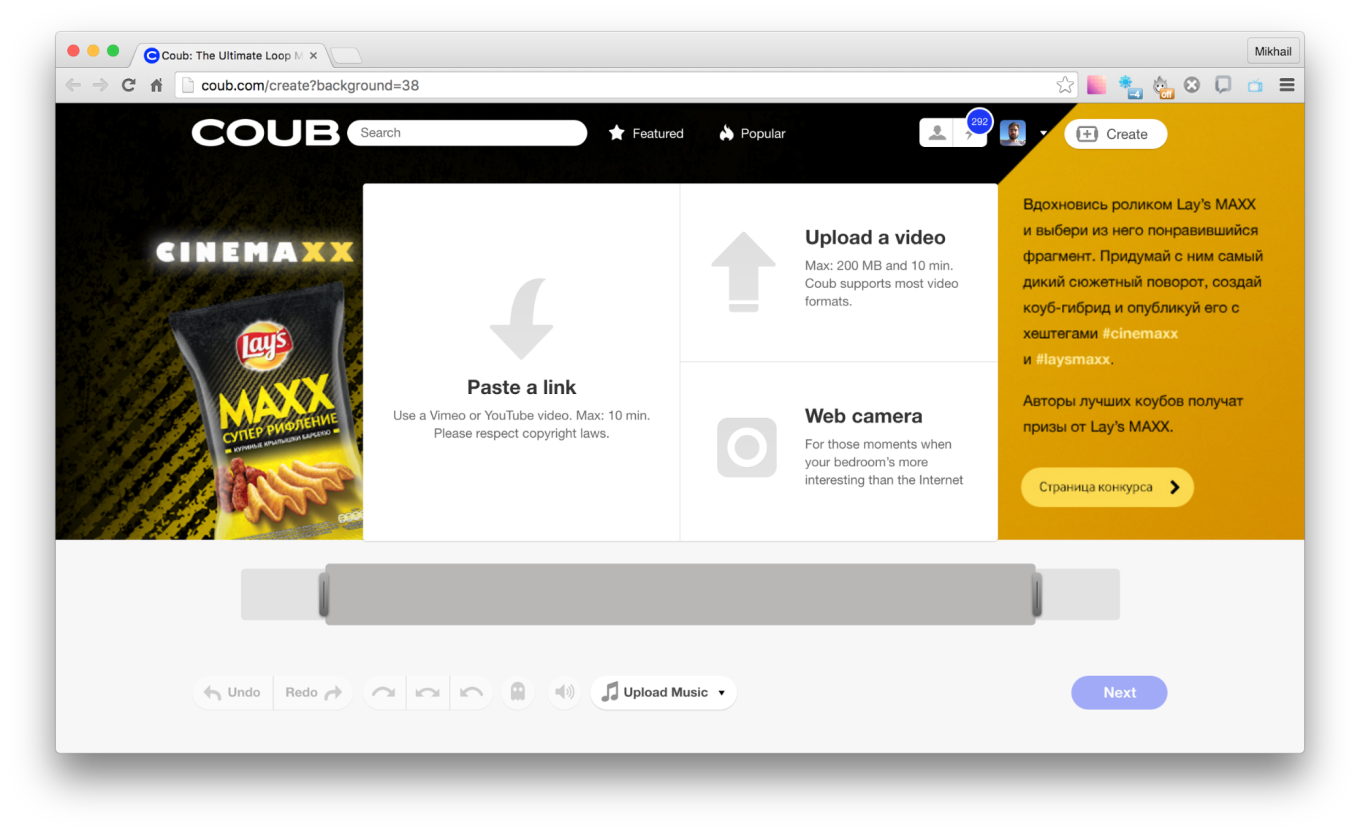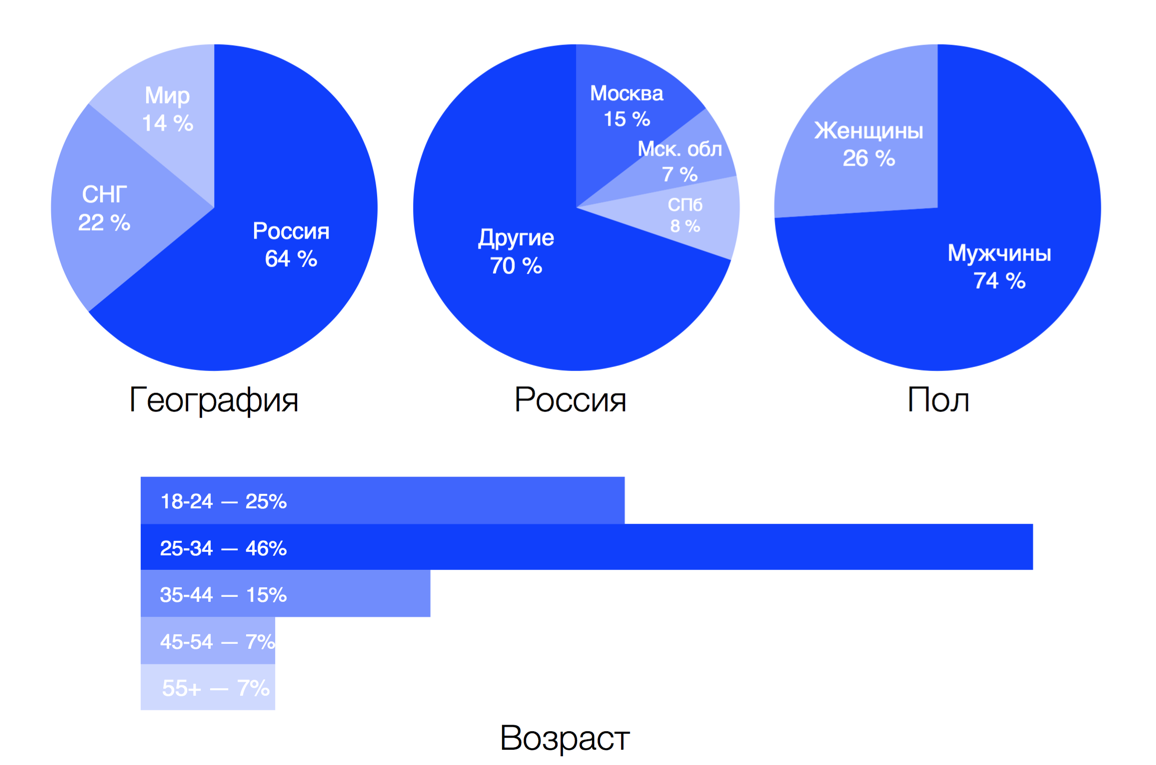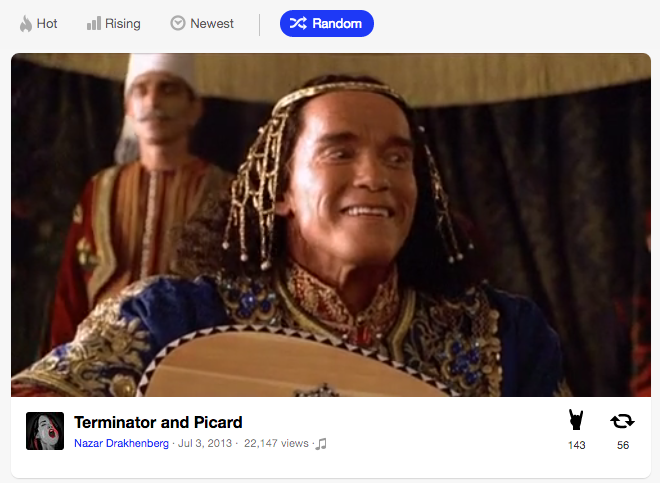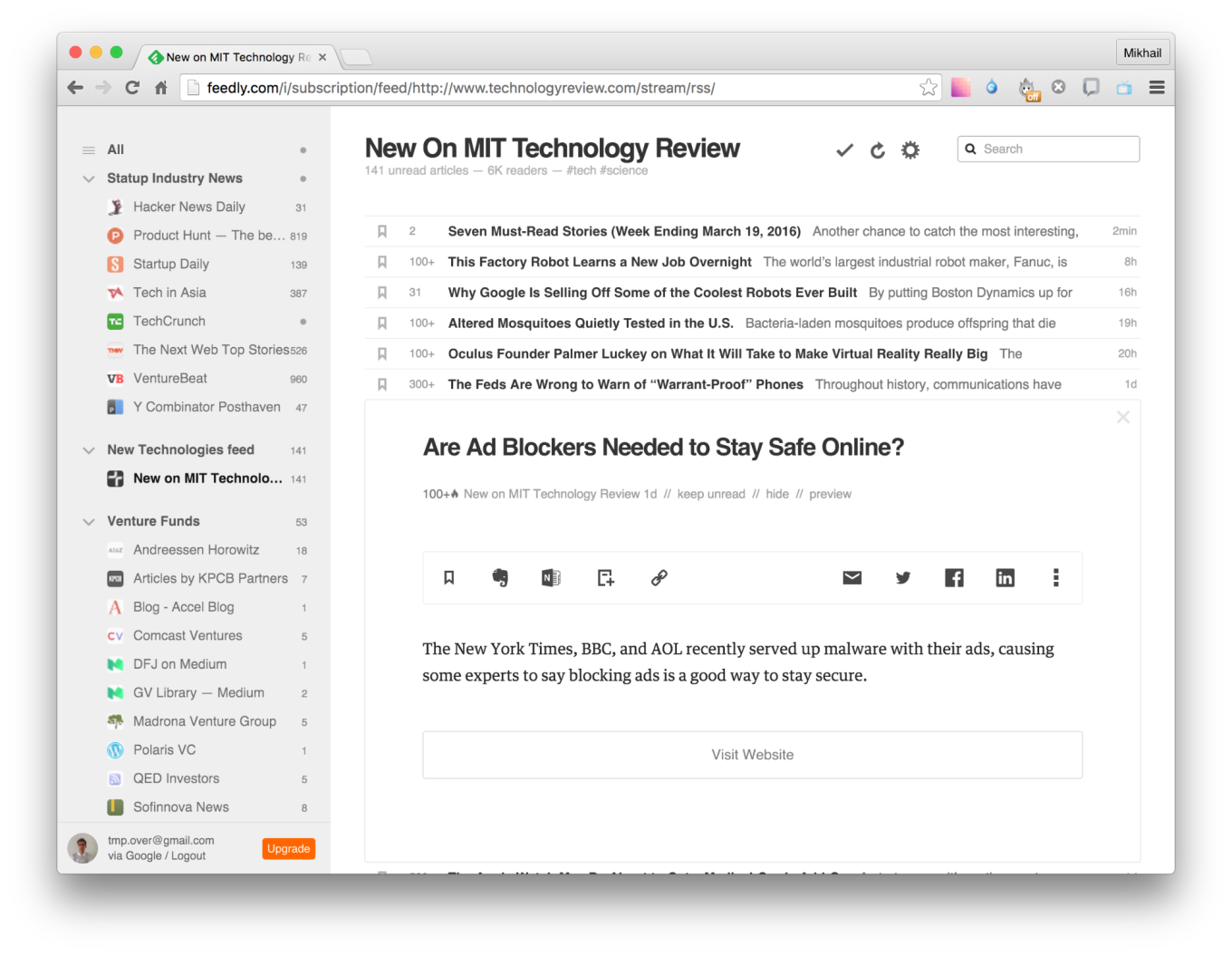Founder of the COUB service Mikhail Tabunov on site personalization, virality and special projects

The loop video service COUB is one of the first platforms that began to use our technologies to personalize the site. The founder of the service, Mikhail Tabunov, told how COUB is structured and why it is not necessary to create your own recommendation system when Relap.io is available .
What they talked about:
- How COUB stopped making its recommendation system and why it does not advise others to do it.
- How to do special projects for 1 million coverage on a site where users generate content.
- People share what they create. How users took over the promotion of COUB.
- Why new planning services can't beat Excel.
- Where to look for ideas and whom to read.
Relap.io now forms the entire block of recommendations under the cobs. Why haven't you made your recommendation system?
In fact, we made it, and even there were several versions. When we decided to compare the conversion with Relap , it turned out that Relap gives twice as many transitions according to recommendations. We tried several algorithms: we set the similar tags for the cobs, the “hottest” content and the content that is similar in content. As a result, our algorithm had a maximum of 25% conversion, while Relap reached up to 50%.
All in all, a good recommender algorithm is pretty hard to do. It is unclear what are the best practices. If you develop yourself, you have to fill all the bumps from scratch. Not every project has the resources for this.
Here's what the Relap recommendations look like on our website:

How does Coub make money?
We, like other media projects, make money on advertising. There are several main advertising formats, starting with special projects on the site and ending with media advertising in the player.
Which ad format makes the most money?
It's hard to say because there is a lot of seasonality. At the end of the year, special projects are leading, for the rest, media advertising.
How are you doing special projects? After all, the content on the site is created by the users themselves?
Special projects are almost always tied to our virality and user-generated content. The most popular mechanics is when our users make cobs from the brand’s video. From advertising, movie trailers, anything. The user goes into the video editor, sees the branding, which briefly describes what needs to be done, participates and wins a prize. Such a project in a week can collect more than a million views of cobs. If the brand doesn’t have a video, then we come up with something else. For example, for Samsung Galaxy A we did a project where the main task was to tell that Samsung released the first phone in a metal case. Users made metal-based cobs. Metal, like music, like material, no difference.

In general, a special project is, first of all, about involving our creative audience. Therefore, projects can be announced in a bunch of different ways, from branding the editor to overlay in embed and mailing lists. Announcement coverage can reach several million users per day.
People who make cobs constantly are the core of the audience. How do you label and measure it?
By the number of people who made at least one cube in the past month. This is approximately 40-50 thousand people. And the entire audience of Coub - 50−55 million.
And by age, who comes to you the most?
Our largest group is 25–34 years old. They are followed by 18-24 years. Mostly men.

How do you attract a new audience and promote the service?
The whole project works on virality. Users make viral content that becomes massive and thus leads to more users. Therefore, now our main promotion forces are focused on developing the community that this content makes. We make the process of creating cobs easier and give more tools for video editing. Users love it and create more and more.
Have you developed any mechanics or interface solutions that push the user to create the cube himself?
Creating content for the user is a very big strain. We are trying to simplify it with all our might so that people would be comfortable trying. In general, we have two main barriers to creating content:
- What to do cube.
- How to edit it to be cool.
We simplified the search for videos to the maximum. If you don’t want to look for anything, then you can just take someone else’s cob, change it a bit and make your own. The perfect memo generator. With video editing, everything is more complicated, because, whatever one may say, you need to spend time on this to figure it out. Here, again, various editor improvements can help the user figure out how it all works.
In general, converting a user who only consumes content into the creator is a very troublesome and tedious business. If a person lights up and joins the community, then he will convert, if not, he will make one or two cubes and quit.
Where does the largest audience come from?
Of course, from social networks. Mostly from VKontakte and a bit from Facebook. Much more comes from fancy blogs like Pikabu, Yaplakal and Fiski.net.
What is your favorite cube?
There is no Cowb, but there is a favorite section. Random There comes the best of the best, in random order. It’s guaranteed to stick, here is the link .

Do you make cobs yourself?
I lead the development and check all the features that go into the release. So I have tons of debugging content. This has already become a kind of meme on the site. For example, the last debugging cube scored 28 likes.
From the funny, I made a cool cube on the first of January. He got up in the morning, drank vodka, ate a sandwich with caviar and gave birth to this monster .
Do you somehow purposefully distribute cobs on social networks?
We only have official pages on Vkontakte, Facebook and Twitter. The rest of the distribution takes place automatically, due to virality.
It often happens that people who make cows publish them themselves. Someone leads communities on VKontakte, someone writes articles. There is a person who works as an SMM manager on Silver Rain and figures for cobs. Superviral videos diverge very quickly - in two days there can be 4 million views.
You do not push them, do not pour money?
Not. The group is growing organically. Already over a million exceeded.
Do you have a person who deals with social networks?
Yes, there is, but he is not only engaged in social networks. We have an editorial board that is responsible for the content as a whole: they find good cows and put them in the right places on the site so that our users have something to see.
How many people does the editorial staff consist of?
Two full-time employees and two to three freelancers who help them.
What services do you use for communication and tasks?
For touch tracking we use Jira and Trello. Everything about development is at Jira, the rest is at Trello. As for communication, somewhere around a year ago we powerfully hooked on Slack. At first I stubbornly, but still rejoice. It allows you to build effective communication in a team, and this greatly saves everyone time. Mail flow dropped three times.
I also want to say something to everyone who is eyeing or has just switched to Slack. It is simply designed to integrate with all other services. Take Jira, for example. It is much easier to write a message and send it, than open Jira, look for the Create Issue button and figure out where to write what. I wrote a special bot with which you can write a task from any discussion in Slack.
It turned out to be so convenient to manage something through the messenger that through the same bot I automated the release process. There is a special channel #ops, you write there: bot deploy prod - and a new release is automatically rolled out. All events from monitoring are written there. You can see right away if something is broken. Plus the whole story is also stored there.
What services are you watching, from whom are you learning from experience and ideas?
I have subscribed to many blogs in Feedly (RSS reader) and try to read everything regularly on Thursdays. It takes two to three hours, but I am aware of all the important things. I put good thoughts on a tablet called Ideas.
I also try to read a book a week, there is generally a treasure.
Why is a sign for ideas, not some Trello?
Trello is awkward to work with when you have 300 tasks in the column. And in my list there is about 500 there. And I regularly do something with it: update, supplement, and so on.
Who do you read in RSS?
I have four folders:
- Startup news. From America, Asia, Australia and Europe. Blogs 10−20 total. Usually, if there is some kind of cool project with breakthrough ideas, then somewhere they will definitely write about it.
- Venture Capital Blogs It is very interesting to read analytical reports, for example about KPCB. Funds usually have a lot of expertise and resources to do good research.
- About technology. There I have Hacker News, MIT Technology Review and a few more.
- About the business as a whole. There is generally a garbage can from the blogs of all kinds of business consultants and sites like psfk.com (which publish one idea a day). They write cool ideas about all kinds of stupid things. Type of quadrocopters for selfie.
Feedly generally has its own feed catalog, and they usually only put the verified ones there. I recommend everyone to watch.

What books do you recommend about management?
Some mega-cool books on management do not exist, as it seems to me. They are all very boring and boring.
According to management theory, I advise everyone to Peter Drucker . This is an American business consultant, one of the first who began to approach management scientifically. There he writes about who such a manager is, what he should do every day and how he should make decisions. In general, it’s worth reading, but it’s very boring.
I highly recommend two books on production management:
- " Lean manufacturing ." A very cool book about several large factories. Their problems, the organization of processes and the overall production culture.
- " Goal ". The basic ideas of lean manufacturing are set out in a very beautiful way.
Reading is very interesting. At least because they are based on real enterprises, with real problems and people.
